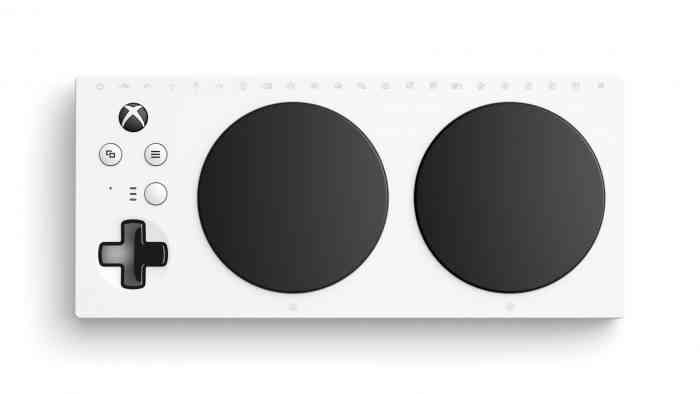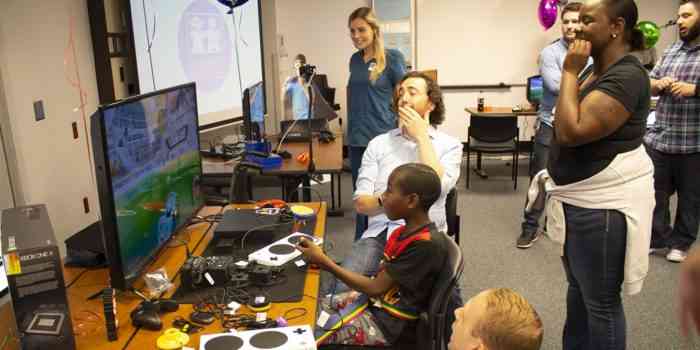A Light in the Darkness
Gaming gets a bad rep. Toxic players, entitled fanboys, and even abusive companies have tainted the public perception of the industry. In many ways, gamers and game companies have miles of progress to achieve in order to further better the industry as a whole. Despite all this, there is a bright light in the darkness, and that’s been the recent trend towards expanding accessibility options and resources in games and consoles.
Accessibility options and peripherals allow video games to be brought to new audiences who may have difficulty physically or mentally playing a certain part of any given title. In the most basic form, accessibility options are most commonly seen as colorblind support, subtitles, and even difficulty adjustments, but for many gamers, this doesn’t cut it.
Specifically, gamers with physical disabilities can still struggle with completing vital tasks in games that do not include the proper accessibility options. Additionally, gamers have long bemoaned poor difficulty adjustments, that do not properly change the game for struggling players. For a long time, the necessary technology for these accessibility options and peripherals just did not exist, however, in the last decade, there has been momentous improvement in this area.
Leaders in Accessibility
Recently, we have seen games produced by major publishers include some groundbreaking accessibility options. Major first-party publishers like Sony and Microsoft are even including them in some of their flagship titles like Uncharted, Ratchet and Clank, The Last of Us, Gears 5, and Forza Horizon.
Naughty Dog themselves are leading the way on the Sony sideline by incorporating controller-based adjustments that allow disabled players to games like Uncharted 4 with only one hand, as well as an incredible variety of difficulty settings in The Last of Us 2 that allow players to tailor the difficulty to their needs.
Microsoft has also done impressive work related to accessibility. Most recently, Forza Horizon 5 has made waves thanks to the soon-to-be inclusion of the first on-screen sign-language interpreter in gaming. This extra step falls in line with previous efforts by Microsoft’s accessibility initiative, such as their adaptive controller that has been used by multiple charities working with disabled children and adults as well. Xbox has also publicized its strategy to stock hospitals across the nation with consoles patients to enjoy, highlighting their commitment to expanding access to video games to everyone they can.

Outside of developers, other corners of the game industry have been celebrating accessibility expansion as well. Websites like caniplaythat.com exist to curate games and advocate for gamers with disabilities, organizations such as Able Gamers work to get the gaming equipment in the hands of those with disabilities, and even high-profile events like The Game Awards dedicate a category solely to innovation in accessibility.
Why it Matters
With films and novels, the development of creating accessible options is somewhat straightforward, but due to the interactivity of gaming and the diversity of how a game actually plays, this industry is a different obstacle.
In technology and industry, stagnation is death. In order to push the gaming industry towards terminal velocity, publishers, developers, and games media must continue to promote and dedicate themselves to comprehensive accessibility inclusion in games. By expanding audiences and opportunities to experience groundbreaking titles, gaming can enter a larger cultural conscious
Video games are fun. People like fun, and will pay to have fun. Without trying to make some big political or moral statement, people deserve to have fun, all people. It seems like a natural win for all parties involved to bring the joy video games can bring to as many people as possible, and remove the barriers preventing many people from doing so.

Despite the need for accessibility expansion, it is an important caveat that there are still places for challenging games like Sekiro: Shadows Die Twice and Returnal. Games that exist to provide players with one uniform experience, without the inclusion of difficulty-based accessibility options, are still an important part of gaming. These titles have a unique role to play by being exactly what they are made to be, difficult. While the inclusion of supports for physical disabilities should still be promoted, FromSoft shouldn’t have to include an easy mode in Elden Ring.
Having accessibility-focused games in the marketplace, as well as challenge-focused, is not mutually exclusive. Both types can hold important places in the vast spectrum of gaming interests, and find their own parts of the marketplace. While gamers will always, and have always found challenges to test their skills, it’s important we remain focused on accessibility in gaming in general, in order to advance the industry as a whole.